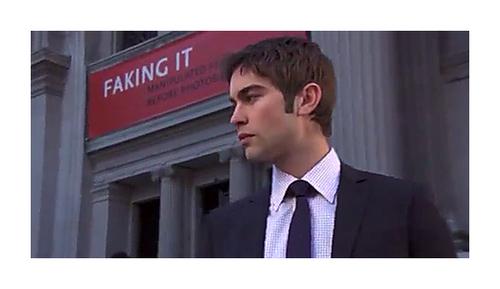empathy
Fake It ‘Til You Make It

Modern photography exhibits are often too much for me. I feel like I have to search way too hard to find anything likable because all aesthetics have been sacrificed in the name of something invisible, unfathomable even, because most art students think that a canted still of a window frame is deep because there’s a reflection in it. Newsflash: it’s not. And yet somehow, most modern photography exhibits flaunt this bothersomely artsy theme throughout their monotonous, monochromatic images. Snooze. However, The Met’s newest photography exhibit, “Faking It: Manipulating Photography Before Photoshop,” featuring work from Edward Seichen, Anne W. Birgman, Barbara Morgan and an impressive host of international photographers, allows you to see both the beauty and purpose of the artwork quite plainly.
I was wildly inspired as I walked through the halls of this extraordinary exhibit. Breathtakingly scenic landscapes that were once a dull, sepia tone came to life as I saw the painted negatives of a vibrant St. Petersburg or the early American west. I also loved seeing some of the more unconventional uses of photographic manipulation that demonstrate the medium’s ability to circumvent human limitation in images like “Man on Rooftop with Eleven Men in Formation on his Shoulders.” Additionally, a plethora of both commercial and protest propaganda round out the exhibit to complete a rich, historical display of the power and influence of the human imagination from photography’s inception in the 1830s and 40s until the 1990s.
Precusor to Photoshop
I had never thought much about photographic manipulation during its infancy, but this exhibit got me wondering about some older photographs and whether they were physically altered or not. The example that came to mind immediately was Charles C. Ebbets’s iconic “Lunch atop a Skyscraper” (1932). Were those men really dangling hundreds of feet in the air? Or was it a simple optical illusion created in a darkroom? Many of the photographs on display in the “Faking It” gallery depict simple images in which the manipulation is not very explicit, much like Ebbets’s photograph; however, some go to great lengths to create literal and metaphoric imagery that couldn’t be captured on film. While not part of the exhibit, Ebbets’s “Lunch atop a Skyscraper” represents the kind of work most pervasive in the gallery, while scenes from Barbara Morgan make more expressive use of photographic manipulation to create such aberrations like a Hearstian squid on the loose.

Walking around the exhibit, you might not even notice many of these “photoshop” style techniques due to their simplicity, but the information accompanying each image is supremely helpful in illuminating the secrets to how they were made, so I would strongly suggest taking the time to read them all. It’s almost as if you are watching a magic show in which the magician immediately reveals how the trick was done. Even though uncovering the secret to any magic trick may rob it of its mystery, it empowers you, forging an appreciation for the tedious labor that goes into creating the illusion.
I think that’s what makes this exhibit so accessible and unlike the many modern photography exhibits I’ve encountered before. With a frame of reference (even some “before” and “after” photographs), I was able to grasp the meaning of the artwork a little more and think about it past a purely aesthetic value, and it is this same understanding that drove me to go out and take a few photographs myself. Armed with several new ideas and techniques that I could employ in my own photography, I grabbed my digital camera and ventured out into the city.
- The Met – “Faking It: Manipulating Photography Before Photoshop,” – Tue-Thu, Sun: 9:30am–5:30pm, Fri-Sat 9:30am–9pm
Article by Eric Rydin
Be the first to write a comment.
Your feedback
